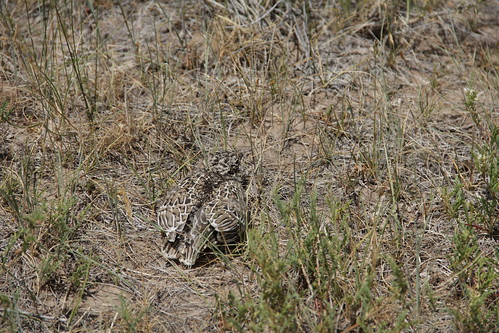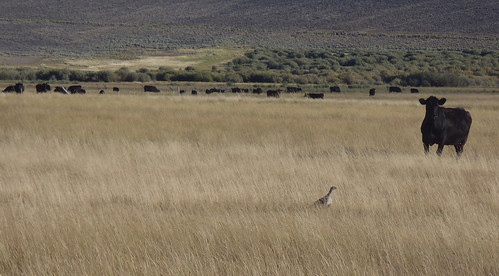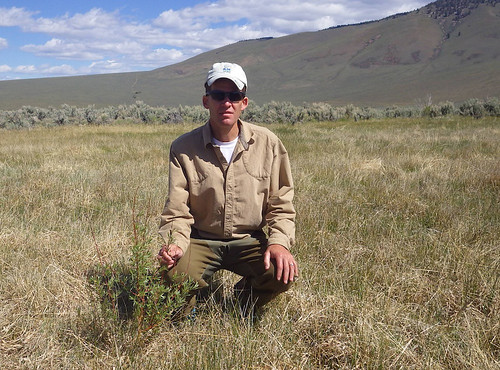
The Natural Resources Conservation Service works with ranchers and partners to improve habitat for sage grouse with funding through the Sage Grouse Initiative. Focusing on privately-owned lands, the initiative covers the 11 western state range of the bird. About 40 percent of the sage grouse dwell on private lands. Steve Stuebner is a freelance writer for the Sage Grouse Initiative, a partnership that includes NRCS.—Alexis Collins, NRCS Idaho
By Steve Stuebner, for the Sage Grouse Initiative
From a hilltop in the upper Pahsimeroi Valley, Rosana Rieth points to a large pancake-like flat. That’s where about 80-100 sage grouse come to mate each spring in the shadow of the highest mountain peaks in Idaho’s Lost River Mountains.
It’s a perfect spot for a sage grouse lek – the land is flat, surrounded by sagebrush, remote and next to the Pahsimeroi River.
After the chicks hatch, the hens take their broods from public land to a wet meadow belonging to the Big Creek Ranch. When owner Tom Page contacted Rieth, a rangeland management specialist of USDA’s Natural Resources Conservation Service, she was delighted to hear of his interest in improving the meadow on his land to make it a better fit for wildlife.

She soon helped him apply for project funding from the Sage Grouse Initiative, a partnership program dedicated to achieve wildlife conservation through sustainable ranching.
“I love working with SGI -- the flexibility is the really great thing,” Page says. “The project can be about fencing. It can be about a revegetation project, or potentially it can be about funding for a conservation easement. I also like that the SGI program works effectively with other federal and state agencies.”
Launched by NRCS in 2010, the Sage Grouse Initiative is a partnership of ranchers, agencies, universities, non-profit groups and businesses that share a vision of conserving wildlife through sustainable ranching.
Once numbering some 16 million before settlement, sage grouse have dwindled to as few as 200,000 birds. The SGI partners work proactively to improve sage grouse habitat and increase sage grouse numbers to prevent the need for listing the bird under the Endangered Species Act.

The Goldburg wet meadow is one of several ranch properties owned by Page and his brother in the area. Its high habitat value puts Page in a unique position to make multiple contributions to conservation.
Under the SGI program, Page made a number of changes to manage his livestock and fence the wet meadow to benefit sage grouse, nesting curlews, mule deer, elk, antelope and songbirds.
Page supports the concept of “all lands management,” where it’s possible to manage cattle and wildlife on a broad scale, regardless of land ownership. His ranch lies in counties that are over 90 percent public land and home to several endangered species.
To keep the Goldburg wet meadow open for wildlife in the early spring, Page grazes his livestock on state lands upslope from the meadow. A livestock management plan delays the time when cattle move into the meadow for several months. When the sage grouse broods go there in the spring, they share it with other wildlife raising their young.
As Page describes the grazing system, we see antelope running around the meadow and hear curlews calling. Suddenly, a sage grouse flushes and flies to safety in the meadow. Just in a couple years’ time, Page is already starting to see the results of improved cattle and wildlife management.
“I’m seeing more antelope here than there used to be,” Page says. “The antelope didn’t used to fawn here, and they do now. I’ve seen more and more elk show up in here. We’re seeing more curlews in the meadow. It’s getting a little bit better all the time.”

